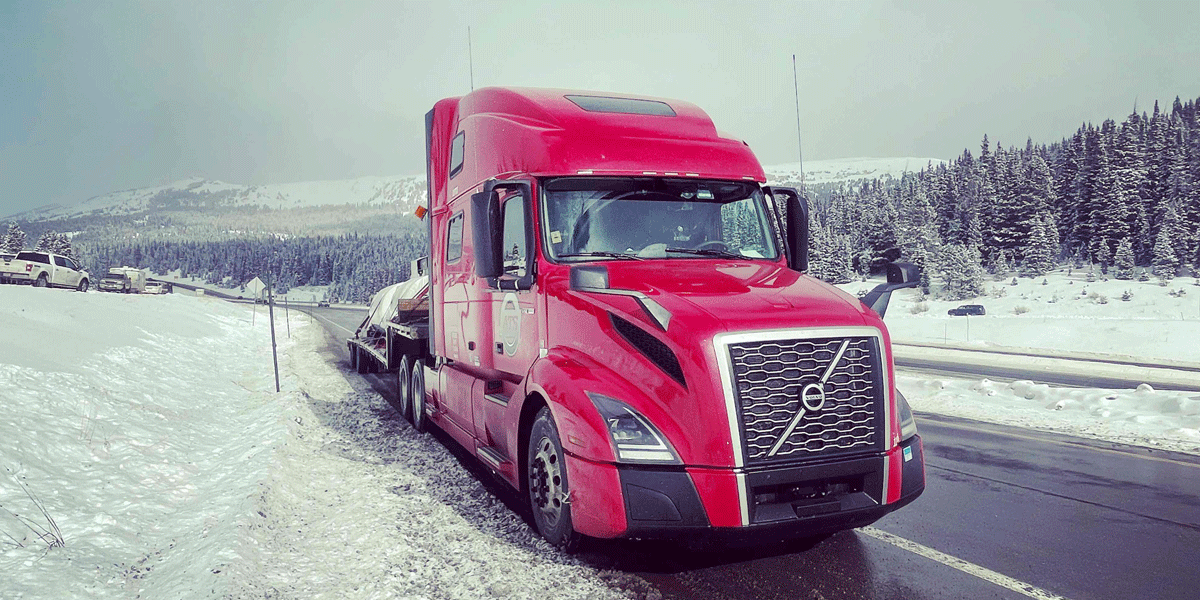How to Prevent Diesel Fuel Gelling This Winter: Pro Tips for Truck Drivers
Jason started with ATS in October 2010 as the prep shop foreman running the unmanned trucks department. He eventually moved into the service shop foreman position and then the trailer shop service leader role. He is currently the shop manager at ATS, a position he has held for just over four years.
Revised December 12, 2025
Winter means bright snow, hot cocoa, holidays with friends and family, and a pensive time for reflection. However, for truck drivers, the winter season is...less idyllic. While ice-covered roads and whiteout conditions can certainly take their toll on drivers, they're not the only things they have to worry about when temperatures start to drop. Because as cold as you might feel, remember that your truck doesn't get a break from the cold. Its engine feels every degree, and if not properly cared for, it'll stall up on you — or worse.
Not ideal when time is money. And that's why winter truck prep matters.
Diesel engines face one of winter's toughest challenges: fuel gelling. As a professional truck driver, you're likely familiar with this. Maybe you've even experienced it yourself, where your fuel thickens up into a waxy, clumpy mess. If so, it probably caused a good deal of frustration. Maybe even a missed load. And with enough challenges to face already during the winter months, that's the last thing you need. Good news: we're here to help.
At Anderson Trucking Service (ATS), we've been dedicated to helping truck drivers succeed, on and off the roads, since 1955. Part of that commitment means making sure drivers know how to stay safe and how to keep their trucks running smoothly during the winter. So, let's get into fuel gelling: what it is, what causes it, and the simple steps you can take to prevent it.
Key Points to Consider with Diesel Fuel Gelling
- Diesel fuel starts to solidify (or gel) near freezing temperatures, and is most common with #2 diesel fuel
- Even in typically warmer areas, fuel can still gel from sudden cold snaps or overnight freezes
- It causes clogged filters, restricted fuel flow, and can lead to total engine failure
- Prevention is cheaper than repair. Winterize your truck early, before temperatures start to drop.
What is Diesel Fuel Gelling?
Diesel fuel naturally contains paraffin wax, a byproduct of crude oil refinement. It's great for powering your truck's engine and keeping it lubricated in normal conditions, but when temperatures drop (between 10 and 15 degrees), the wax solidifies into crystallized clumps. These clumps thicken your fuel and clog your filters, preventing it from flowing to your truck's engine. This is what is known as fuel gelling, and it's especially prevalent with drivers using #2 diesel.
Once fuel gelling starts, it can cause a number of problems for your engine (and you) — not the least of which is a complete and total shutdown. The process goes a little something like this:
- Cloud Point: This is when the wax first starts to crystallize (typically around 32 degrees Fahrenheit)
- Pour Point: Fuel thickens and stops flowing altogether (typically around 20 degrees Fahrenheit)
- Gel Point: Game over. Your truck is officially down for the count.
This is why it's critical to take preventative measures before temperatures get to that cloud point. If you see that in the upcoming forecast, even as overnight low, take action. You'll be glad you did.

How Can You Tell If Your Diesel is Gelling?
Usually, you can't. Until it's too late. Drivers will sometimes mistake black smoke or poor fuel mileage as signs of fuel gelling, but that's not the case. Those are usually signs of some other kind of engine or maintenance problem.
The good news? There are some tells that can help you spot fuel gelling quickly once it's started, including:
- Your engine won't start or dies right after starting
- Sluggish acceleration or a drop in power while driving in cold weather
- A noticeable difference between desired fuel rail pressure and actual pressure — a telltale sign your truck is struggling to deliver fuel
Any of these tells may mean your fuel has already gelled, but if you act quickly, you can still prevent it from getting worse and leaving you stranded on the side of the road. Here are some things you can do:
- If possible, move to a warmer area. Even a few degrees can help.
- Add in your emergency treatment (see below) and let it circulate before starting your truck up again
- Once your fuel has thawed, replace the fuel filter
Failing all of the above, call roadside assistance or your carrier's maintenance line. Don't keep cranking or forcing things. As with anything else, that'll only make matters worse.
Alright, So How Do I Prevent My Fuel From Gelling?
I was hoping you'd ask, and so I've put together this remarkably easy three-step plan to help you stop fuel gelling before it even starts. Let's go!
Step 1: Use Premium Winterized Diesel
Unless you're a pencil, it's good to be #1. That's why, in cold-weather states, most truck stops switch to #1 diesel (or a winter blend of #1 and #2 diesel). #1 contains less wax than #2, which means it handles lower temperatures better and reduces your risk of gelling.
Pro Tip: States regulate when winter blends hit the pumps, so plan ahead as you travel across regions and top off with #1 before heading into colder areas. The label at the pump will show the blend type.
Step 2: Add Anti-Gel Additives at Every Fill-Up
Even with a winterized fuel blend, there are no guarantees, and this simple additional measure can save you hours of frustration and downtime. You'll find anti-gel additives at truck stops and most major retailers, like Walmart, and they help to:
- Lower the temperature where fuel begins to thicken
- Keep wax crystals from forming
- Improve fuel flow and prevent filter clogging
The trick is to add it before the temps drop and your fuel starts to gel. It won't do you much good after the fact. Putting anti-gel in before you fill up also gives it time to mix and spread evenly throughout your fuel.
Pro Tip: Follow the product directions carefully. The colder it gets, the more concentrate your tank needs. It's a good idea to have several bottles on hand in your truck, along with spare fuel filters and an emergency reliquefying agent like Diesel 911 (for last-resort situations).
Step 3: Keep Your Fuel Tank Full
A fuller tank means less air, and less air means less condensation. It's science. Or something. The point is this: condensation (or moisture) in your tank can freeze, causing filter icing and gelling.
Pro Tip: When possible, refuel at the end of your shift, not the beginning. That will keep your fuel warmer overnight so you're ready to go in the morning.
Additional Tips:
- If parking outside, point your truck east. That way, the morning sun will hit your tank, helping it to thaw faster
- Use engine block and fuel tank heaters when available
-
Change your fuel filters regularly

Last Stop: Preparation Beats Downtime
At ATS, our drivers log millions of miles every winter, through some of the harshest conditions in North America, and after 70 years, we've learned that cold-weather success takes more than luck. It takes preparation.
Driving a truck in the winter brings enough challenges, but something as easily preventable as fuel gelling shouldn't be one of them. By using the steps outlined in this guide, you'll be rolling steady all winter long, while others are stuck waiting on the shoulder.
If you're ready to drive with a carrier that prioritizes winter readiness and driver support, contact one of our driver recruiters today, and stay safe out there!

